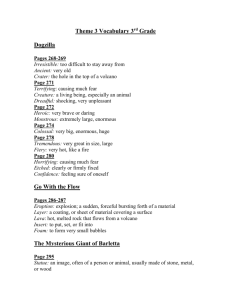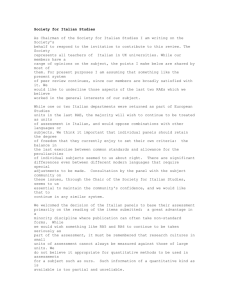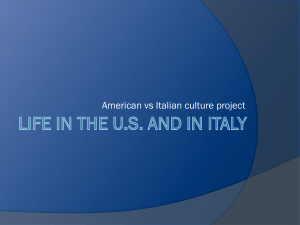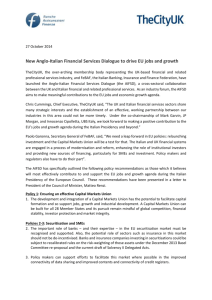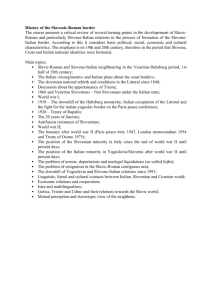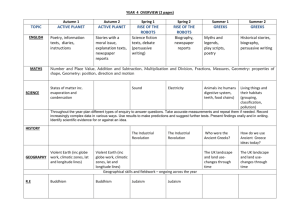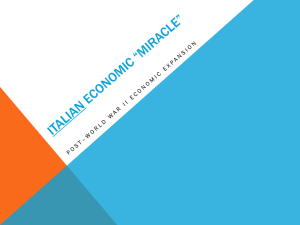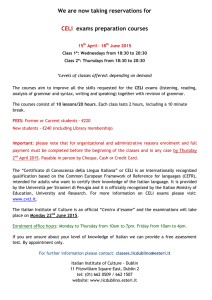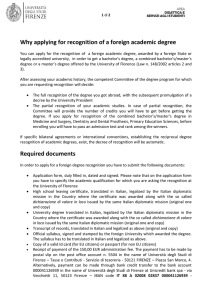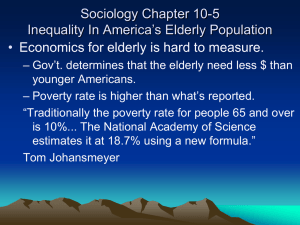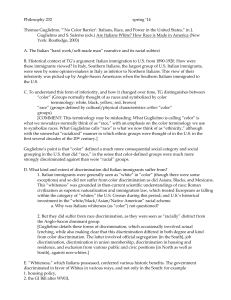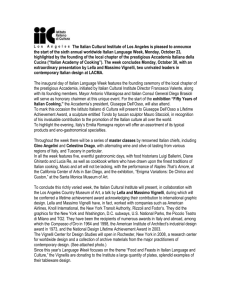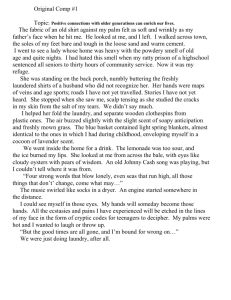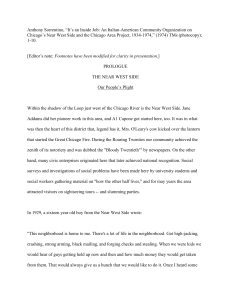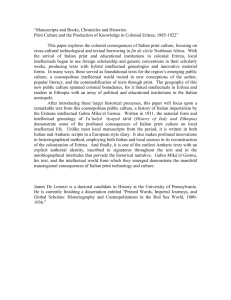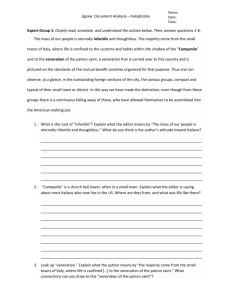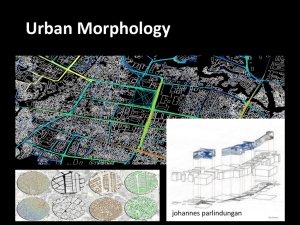The Italian Family Then and Now
advertisement
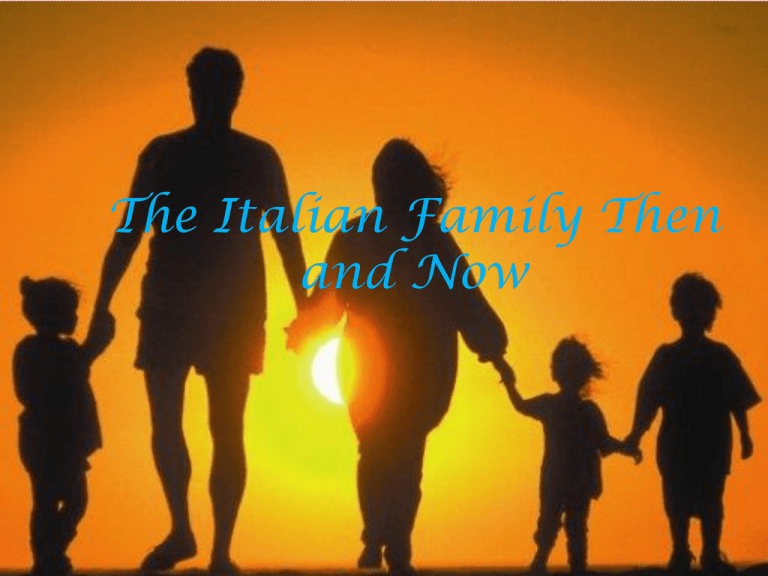
The Italian Family Then and Now To understand the changes inside families we have made use of the method of interviews at three different age ranges: seniors, adults and young people. The questions asked were designed to find out the changes which have taken place inside the Italian family about education and traditional values. The family from the seniors' point of view In 1950, the typical Italian family was composed of a big number of people. The father was the head and he had an authoritarian role. Moreover he was concerned with the financial management of the family and used to work in the fields. The woman ,on the contrary, used to spend most of her time at home, dedicating herself to the children's education and to the housework. The respect for the rules, values and family traditions were handed down to the children who, in turn, handed them down to the next generations. Marriage, in the family of the 50s, had a sacred and inviolable value, a union for life based on love and on the existence of a big family with lots of relatives and children. Many women accepted the tradition of wearing a white dress, a symbol of purity. The family from the parents' point of view The family of about 20 years ago appears to be composed of fewer people than in the past. The father’s role continues to be that of the head of the family but he lets his partner manage the choices regarding children. The mother often works outside the house to contribute to the family income. The purpose of marriage is considered to be independence from the original family. It is a union for life based on respect and sharing daily routines . It is a very important value. The family from the young generations’ point of view Over the latest generations the parents' roles have become the same. Both parents work and contribute to support the family. Sometimes the woman has the say both in the economic aspect and in the decisions about children. Marriage is only a formality, a simple contract. Nowadays the living together and the sharing of every-day routines with the lover are very important. But today, there is less communication within the family due to computers and the internet. Most young people of the last decade are almost free. The elderly Italy is renowned for its family values, but with one-fifth of the population now over 65 many Italians are outsourcing home care for the elderly to immigrants. In traditional Italian society, the elderly and disabled lived with their families, and were taken care of by their female relatives. Today, families are often unable or unwilling to look after their elderly, who at the same time live longer and require a greater care over a lengthier period of time. Latest research suggests the number of Italians in nursing homes is dropping despite the number of over-65s increasing. But dwindling family networks and fewer women staying at home mean that many Italians now depend on immigrants. Families have become nuclear or monoparental, and many of the things the family did before, immigrant women do today Figures from the National Social Security Institute (INPS) indicate that most domestic caregivers in Italy come from Ucraina, Romania, the Philippines, Poland, Ecuador, Moldova and Peru. Foreign nationals represent an essential "resource" for Italian families "because they provide excellent services in response to a need for caregiving in an ageing population." The close ties and familiarity generated by caregiving can "boost the integration" of people belonging to different cultures, because prejudice is often a result of ignorance, superficial interactions and lack of in-depth contact. Alessandra Busà, Fabiana Chillemi, Alessia Furone, Arianna Gangemi

